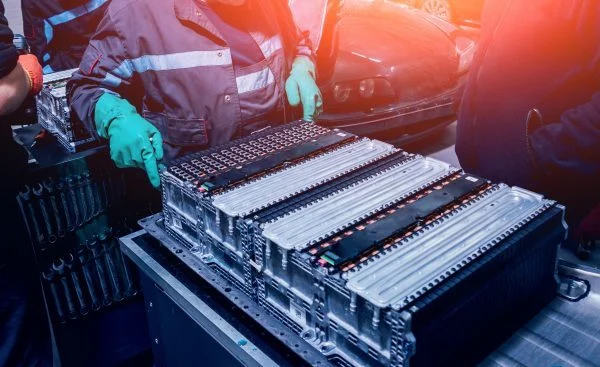According to the latest Battery Raw Materials Deployment Update by Adamas Intelligence, the Global Electric Vehicle (EV) market achieved a new milestone in January 2025, with a record-breaking 1,842,787 passenger Battery Electric Vehicles (BEV), plug-in Hybrid Electric Vehicles (PHEV), and Hybrid Electric Vehicles (HEV) sold worldwide, Mining Zimbabwe reports.
While this represented a 30% decline compared to the previous month, the sales surge marked a 17% increase compared to January 2024. This impressive year-over-year growth highlights the increasing global transition toward electric mobility, even amidst typical seasonal fluctuations.
Sales trends varied regionally, with the Asia-Pacific experiencing a 34% drop in month-over-month sales. However, the region still showed a 16% increase in sales compared to the same time last year, signaling sustained growth despite short-term setbacks.
Europe, too, saw a 21% drop from December 2024, but overall sales increased by 11% year-over-year. The Americas presented a more optimistic picture, with a 28% year-over-year rise, despite a 25% decline in month-over-month sales. These regional dynamics indicate that the EV market is becoming more resilient, with long-term growth continuing despite occasional fluctuations.
Alongside the rise in EV sales, the demand for batteries also reached new heights. In January 2025, a total of 63,673 MWh of battery capacity was deployed globally in newly sold passenger xEVs. While this represented a 36% month-over-month decline, it still marked a robust 21% increase compared to the same period in 2024. CATL led the way in battery deployment with 19,337 MWh, followed by Tesla with 7,258 MWh. The global sales-weighted average battery capacity per vehicle also rose by 4% year-over-year, driven by the increased sales of BEVs and PHEVs, which saw stronger growth compared to HEVs.
As the market for electric vehicles expands, so does the demand for raw materials to power these batteries. In January 2025, critical battery materials, such as lithium, nickel, cobalt, manganese, and graphite, all saw significant deployment. A total of 36,967 tonnes of lithium carbonate equivalent (LCE) was deployed in the batteries of newly sold passenger xEVs. Despite a 35% drop from December 2024, this figure represented a 19% year-over-year increase, underscoring the growing need for lithium as EV adoption accelerates. CATL led in LCE deployment with 11,477 tonnes, while Tesla was the top xEV maker with 4,027 tonnes. The global sales-weighted average amount of LCE deployed per battery also increased by 2% year-over-year, reaching 20.1 kg.
In addition to lithium, nickel also plays a vital role in the production of EV batteries. In January 2025, 24,029 tonnes of nickel were deployed globally, reflecting a 30% decrease from the previous month but a 13% increase compared to January 2024. As with lithium, CATL led in nickel deployment with 6,371 tonnes, while Tesla remained the leader among xEV makers with 3,176 tonnes. The average amount of nickel deployed per battery stood at 13.0 kg, a slight 3% decrease from the previous year. These figures highlight the crucial role of nickel in powering the next generation of EVs and the industry’s ongoing efforts to secure a stable supply of this essential material.
Cobalt, another critical component, saw 4,252 tonnes deployed globally in January 2025. While this was a 29% drop from December 2024, it marked a modest 1% year-over-year increase. CATL continued to lead in cobalt deployment, with 1,397 tonnes, while Tesla again emerged as the top xEV maker with 342 tonnes. The average amount of cobalt deployed per battery was 2.3 kg, down 13% from the previous year. This reflects the industry’s ongoing efforts to reduce its reliance on cobalt, which remains one of the more challenging materials to source sustainably.
Manganese, which is also essential in battery chemistry, saw 5,316 tonnes deployed globally in January 2025. While this was a 29% decline from the previous month, it represented a 14% increase compared to January 2024. CATL again led manganese deployment with 1,946 tonnes, while Luxeed led among xEV makers with 299 tonnes. The global average amount of manganese deployed per battery stood at 2.9 kg, which was a 10% decrease from the previous year. This decrease in manganese deployment may signal ongoing efforts by manufacturers to optimize battery compositions and reduce material costs.
Graphite, a critical material in the production of EV batteries, saw 58,766 tonnes deployed globally in January 2025. While this was a 36% drop compared to December 2024, it represented a 22% increase year-over-year. CATL was the leader in graphite deployment, with 18,266 tonnes, while BYD remained the top xEV maker, deploying 7,440 tonnes. The average amount of graphite deployed per battery increased by 4%, reaching 31.9 kg. This growth in graphite usage reflects its continued importance as a key component in lithium-ion batteries.
Overall, the data from January 2025 underscores the growing momentum in the global transition to electric mobility. While month-over-month fluctuations are to be expected, the strong year-over-year growth in both EV sales and battery material deployment demonstrates the industry’s resilience and potential for further expansion. As demand for electric vehicles continues to rise, so will the need for efficient supply chains and innovative solutions to secure the necessary raw materials. The future of electric mobility remains bright, with significant progress being made toward a more sustainable and electrified world.





